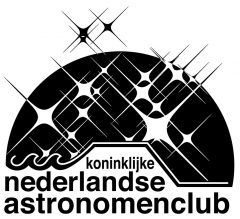Poster Abstract
P.7 Bob Jacobs (Universiteit van Amsterdam)
H- opacity in the near-infrared emission spectrum of ultra hot Jupiter KELT-9b
Ultra hot Jupiters (UHJs) are expected to have featureless emission spectra. Because most molecules are dissociated at these high temperatures (>2200K), we expect the continuum opacity of H- bound-free and free-free absorption to dominate UHJ emission spectra.Here we present the near-infrared secondary eclipse spectrum of the hottest exoplanet known to date, KELT-9b (Teq~4000K), observed with the Hubble Space Telescope Wide Field Camera 3 (WFC3). The spectrum exhibits a turnover at 1.4 micron that we attribute to H- bound-free absorption. Additionally, we detect stellar pulsations and a possible deviation from a disk-integrated brightness temperature model in egress.
We complement our WFC3 spectrum with TESS and Spitzer eclipse depths and perform a retrieval on a grid of forward models to retrieve KELT-9b's atmospheric properties. We will present these results and discuss implications for KELT-9b and exoplanets in general.
